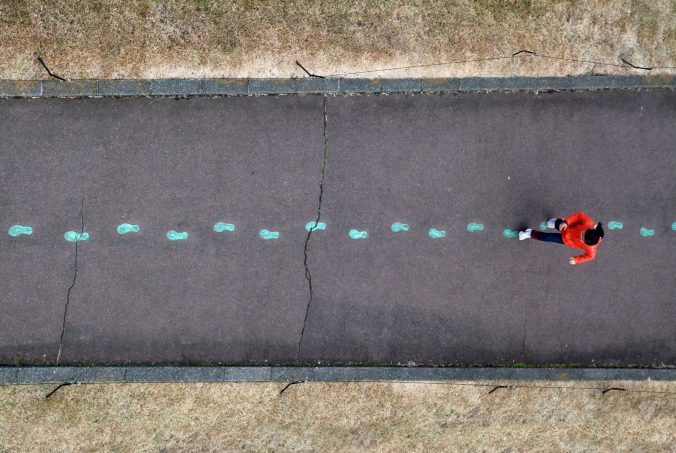Blog Prompt 1–Learning, Theory and Motivation (Responding to two peers)
I really enjoyed reading Sandra Wang‘s post on how to overcome a learning challenge and what strategies to use. She used her personal experience to demonstrate some of the obstacles that international students face while studying abroad. I appreciate Wang for sharing her story because I find myself resonate with her. As international students, we face issues such as language barriers, culture shock, and different types of stress caused by living in a foreign country. We need to cope with these issues while trying to study.
When trying to overcome language barriers, Wang used cognitive learning theory as her strategy because she believes that language and culture are connected. Wang’s post suggests that our cultural background influences our cognitive processes; hence, understanding Canadian culture is the first step she took when she was learning English. Her explanation of her learning process is a really good introduction to cognitive learning theory and gave me much-needed insight into the cognitive process in learning, such as the link between language, information processing, and problem-solving, In Chapter 11 of the book, Peggy A. Ertmer & Timothy Newby(2013) state that cognitive learning theory puts great emphasis on making learners more involved in learning, and providing the environment in which students can actively absorb information, and process information (Ertmer & Newby,2013). I think Wang is really an active learner because she knows that learning a language is more about learning the language itself, when she discovers that culture influences her learning of English, she actively changed her strategy and made good use of her cognitive ability.
Finally, In discussing the topic of motivation, Wang’s post introduces how behaviorism learning theory plays a role. By giving learners tangible rewards, Wang thinks students will be more motivated.
A big thank you to Sandra Wang’s thoughtful post, it was a very enjoyable read indeed!
Reference:
Ertmer, P. A., & Newby, T. J. (2013). Behaviorism, cognitivism, constructivism: Comparing critical features from an instructional design perspective. Performance Improvement Quarterly, 26(2), 43-71.
I appreciated Huatian He‘s post on his experience with a barista course. He’s learning experience makes me wonder whether intrinsic motivation is the key to become an active learner. In other words, He’s post allows me to see cognitivism learning theory from a different perspective. From Ertmer & Newby’s (2013) chapter, I learned that cognitivism learning theory wants students to take ownership of their learning. There are various ways for instructors to help students to become active learners, but what if students lack the intrinsic motivation to be actively involved in the course? In He’s post, what makes his learning experience a successful one are: 1. he likes drinking coffee (which makes him interested in this barista course in the first place); 2. his education background: mechanics and chemistry. I believe that one’s interest is something that cannot be forced or controlled, but instructors can make good use of behaviorism learning theory–use tangible rewards to motivate students externally. Then, learn about student’s educational backgrounds, and use the cognitivism learning theory to make the connection between new information and the old knowledge that students already acquired.
He’s post is really enlightening and I really appreciate that he shared this experience. It made me to see the importance of both behaviourism and cognitivism learning theory.
Reference: Ertmer, P. A., & Newby, T. J. (2013). Behaviorism, cognitivism, constructivism: Comparing critical features from an instructional design perspective. Performance Improvement Quarterly, 26(2), 43-71.
Blog Prompt 2—- Learning Design II
Huatian ‘s post is really impressive, he included additional research which allowed me to see how inquiry-based learning can be implemented in math classrooms. Compared to what Huatian said about the inquiry-based learning method to my personal experience with math classes, I think the difference is that non-inquiry-based learning is more teacher-oriented, whereas the inquiry-based learning method focuses on student’s learning experience. It is an interesting choice for Huatian to relate inquiry-based learning with math classes because my stereotype is that math classes leave students less space to be creative, as my math teacher always wants us to solve questions in his way, but not in our own way. Hence, I am very delighted to see teachers nowadays are changing the traditional method of teaching, and give students in math class the freedom to explore different problem-solving methods, and what they really want to see is student’s skills developed in solving problems. I think this method also matches with our learning resource because we would also like to see student’s creativity and their critical skills in learning.
Sandra’s post is very thoughtful and inspiring. Her post is about experiential learning. It was a very enjoyable read because Sandra always includes illustrations and highlights (of important parts) in her post. The illustration (a figure) of experiential learning showed me how experience, reflection, thoughts, and act work together in a learner’s learning process when adopting experiential learning. . This learning method is also focused on learner instead of the teacher, which I think it’s a characteristic of useful learning method. Another advantage of this learning method is that it helps students to gain a holistic understanding of the subject, I think this is the biggest benefit of this learning method because it is something that some learning methods cannot achieve. Experiential learning method is especially good for our learning resource because we don’t want to limit our students’ communication skills just in a business context. We want them to apply what they learn in other real-life situation so that it could help them deal with different scenarios, which is why our learning resources also include readings in communication discipline, and link these materials that to a business context.
Blog Prompt 3 —-Design for Inclusiveness
I really enjoyed reading Sandra’s post about designing for inclusion. I think she really managed to see special needs as simply human needs and to label human needs as special needs is a sign of discrimination. The video that Sandra embedded in her post helped me to see how designing for inclusion/diversity actually works, even though most of us know what inclusiveness means, it does not necessarily mean that we know how to foster that kind of inclusive environment in our classroom.
Here are the list of lesson I learned from the video that Sandra posts:
- Know your students
- Make sure that your students know that this course aims for inclusiveness
- Design the learning resource to be student-centered
I also appreciate that Sandra mentioned my approach to ensure inclusiveness in the interactive resource draft. Thank you for agreeing with my approaches and add such a great video along with them.
Blog Prompt 4 —- Design for Interactive
Huatian‘s post about designing for interactive is very educative. Although the video is not inherently interactive, Huatian provided some suggestions that could make this type of learning resource more interactive, such as the use of the activities in the video, and then ask students to do each of these activities. What I find most interesting is the “forum” activity that Huatian mentioned. For me, I think forum activity would not facilitate interaction because it’s not synchronized. Some students leave a message and wouldn’t be checking it until the next day. Thus, I think it really would slow down the process of collaboration if we are really aiming for one. Also, Huatian acknowledged that monitoring forum activity is not an easy task, and it is hard to see students’ improvement just from responding and replying to others.
Sandra’s post also included a video that is not inherently interactive, she managed to see the potential of this video and design it to be more interactive, the one activity that I particularly like is to let students write questions for the video. This activity could make students more engaged in the class because it requires them to think more critically. Sandra’s idea about playing this video at the beginning of the class is very appropriate because the video is basically an abstraction of our topic. However, letting students write reflections at this point of the class is inappropriate because they don’t have enough knowledge to reflect considering we are still at the early stage of the course. As for Sandra’s choice for feedback, I think the email might not be the best way to give feedback. This is because if we really want students to learn communication skills then we should get them to talk, thus schedule a short (perhaps 3 minutes) session with each student and give them feedback while communicating with the students really matches the intention of our course and allows them to apply what they learned in the video.


Recent Comments